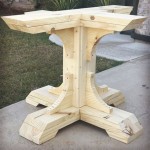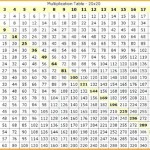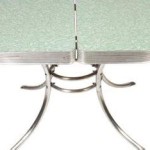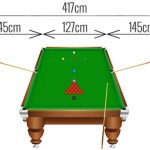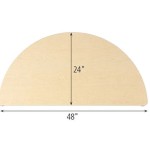Reclaimed Barn Wood Dining Table Plans: A Comprehensive Guide
The allure of reclaimed barn wood for furniture construction, particularly for dining tables, stems from its inherent character, history, and the sustainable practice of repurposing materials. These tables offer a unique aesthetic, with imperfections and variations in the wood grain serving as a testament to their previous life. Embarking on a reclaimed barn wood dining table project requires careful planning, material sourcing, and a thorough understanding of woodworking techniques. This article provides a comprehensive guide to developing successful reclaimed barn wood dining table plans.
Key Considerations Before Developing Plans
Before any detailed planning can commence, several critical factors need to be addressed. These considerations directly influence the design, dimensions, and overall feasibility of the project. Ignoring these initial assessments can lead to complications during the construction process and a less-than-satisfactory final product.
First and foremost, the intended size and shape of the dining table must be determined. This decision hinges on the number of individuals the table is expected to accommodate regularly and the available space within the dining area. Standard dining table dimensions are readily available online and in furniture design resources, providing a starting point for customization. Consider the room's proportions and existing furniture to ensure the table complements the overall aesthetic.
Next, the availability and condition of the reclaimed barn wood are crucial. The species of wood, its thickness, width, and length will dictate the design possibilities. Inspecting the wood for rot, insect infestation, and excessive warping is essential. The amount of usable lumber will directly impact the table's size and the complexity of the design. Sourcing reclaimed wood from reputable suppliers is advisable, as they often pre-treat the wood and ensure it is kiln-dried to prevent further degradation.
Finally, the desired style of the table should be clearly defined. Reclaimed barn wood lends itself to a variety of styles, from rustic and farmhouse to modern and industrial. Researching different table designs and collecting inspiration images helps to solidify the aesthetic vision. Consider the type of table legs or base that will complement the reclaimed wood. Options include traditional wooden legs, metal hairpin legs, or a custom-built trestle base. The choice of finish will also significantly impact the final look and feel of the table, influencing the selection of appropriate sealants and protective coatings.
Developing Detailed Plans: A Step-by-Step Approach
Once the preliminary considerations are addressed, the process of developing detailed plans can begin. These plans should encompass all aspects of the table's construction, from the tabletop itself to the supporting structure. Accuracy and clarity are paramount to ensure a smooth and efficient build.
The first step involves creating a scaled drawing of the table, including top, side, and end views. This drawing should accurately represent the dimensions and proportions of each component. Software such as SketchUp or AutoCAD can be invaluable for creating precise and detailed 3D models. Alternatively, traditional pencil and paper methods can be used, provided meticulous attention is paid to accuracy.
Next, prepare a cut list, outlining all the individual pieces of lumber required for the project. This list should specify the dimensions (length, width, and thickness) of each piece, as well as the quantity needed. Accounting for waste and potential errors is crucial when calculating the required lumber. It is advisable to add a margin of safety to the cut list, particularly if working with reclaimed wood that may require additional trimming or repairs.
The plans should also include detailed instructions for assembling the table. This section should outline the sequence of steps, the tools required, and any specific joinery techniques that will be employed. Common joinery methods for table construction include mortise and tenon joints, dowel joints, and pocket screws. The choice of joinery will depend on the desired strength and aesthetic of the table. Clear diagrams and illustrations are essential to effectively communicate the assembly process.
Furthermore, the plans should specify the type of hardware (screws, bolts, etc.) that will be used. Selecting appropriate hardware is critical for ensuring the structural integrity of the table. The size, material, and finish of the hardware should be carefully considered. For example, using stainless steel screws in a humid environment will prevent rust and corrosion. The plans should also detail the steps involved in finishing the table, including sanding, staining (if desired), and applying a protective coating. The choice of finish will depend on the desired aesthetic and the level of protection required.
Finally, consider the integration of any additional features, such as breadboard ends, aprons, or leaves. Breadboard ends can enhance the table's appearance and structural stability by preventing warping and cupping. Aprons provide additional support to the tabletop and can also serve as a decorative element. Leaves allow the table to be extended to accommodate larger gatherings, adding versatility to its functionality. Incorporating these features into the plans requires careful planning and precise execution.
Addressing the Challenges of Reclaimed Barn Wood
Working with reclaimed barn wood presents unique challenges that must be addressed during the planning and construction phases. Unlike new lumber, reclaimed wood often exhibits imperfections, variations in moisture content, and potential contaminants. Overcoming these challenges requires careful preparation and adaptation of standard woodworking techniques.
One of the primary challenges is dealing with uneven surfaces and variations in thickness. Reclaimed barn wood is often rough and may contain nail holes, cracks, and other imperfections. Thorough sanding is essential to create a smooth and even surface. A belt sander can be used for initial sanding, followed by a random orbital sander for finer finishing. Planing the wood to achieve a uniform thickness may also be necessary, particularly if the reclaimed lumber varies significantly in dimensions.
Another challenge is addressing potential insect infestations. Reclaimed barn wood may harbor insects that can damage the wood and spread to other furniture. Kiln-drying the wood is the most effective way to eliminate insects. If kiln-drying is not feasible, treating the wood with a borate-based insecticide can help to prevent infestations. Applying a sealant or finish will also help to protect the wood from future infestations.
Moisture content is another critical consideration. Reclaimed barn wood may have a higher moisture content than new lumber, which can cause warping and cracking as the wood dries out. It is essential to allow the reclaimed wood to acclimate to the environment in which it will be used before beginning construction. Storing the wood in a dry, well-ventilated area for several weeks will allow it to stabilize. Using a moisture meter to monitor the wood's moisture content is advisable.
Finally, safety precautions should be emphasized throughout the planning and construction process. Wear appropriate personal protective equipment (PPE), including safety glasses, dust masks, and gloves. Work in a well-ventilated area to avoid inhaling dust and fumes. Use sharp tools and follow safe operating procedures. When working with power tools, ensure that they are properly grounded and that all safety guards are in place. By addressing these challenges and adhering to safety guidelines, a successful and aesthetically pleasing reclaimed barn wood dining table can be created.
Developing comprehensive reclaimed barn wood dining table plans involves careful consideration of size, style, material availability, and the unique challenges associated with reclaimed lumber. A detailed cut list, assembly instructions, and finishing schedule are essential components of successful plans. Addressing the specific characteristics of reclaimed wood, such as uneven surfaces, potential insect infestations, and moisture content, is crucial for ensuring the longevity and aesthetic appeal of the finished table. Proper planning and execution will result in a unique and durable dining table that showcases the inherent beauty of reclaimed barn wood.

Diy How To Build A Faux Barnwood Dining Table Building Strong

Diy Barn Wood Table From To Dining

Diy Farmhouse Dining Table With Reclaimed Wood And Hearth

Diy Farmhouse Dining Table With Reclaimed Wood And Hearth

Diy Barn Wood Table From To Dining

How To Build A Farmhouse Table

Diy Pottery Barn Inspired Dining Table Easy 1 Day Beginner Project

How To Build A Rustic And Bold Farm Table Diy Projects With Pete

Diy Barn Wood Table From To Dining

Reclaimed Wood Rustic Dining Table The Alternative Consumer Kitchen Tables

